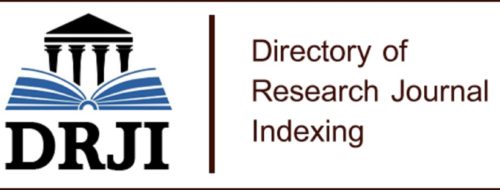Araştırma Makalesi
Yıl 2021,
, 103 - 117, 25.12.2021
Öz
Çalışma, demiryolu hizmetlerinin maliye teorisi açısından hangi kamusal mal özelliği taşıdığını araştırmakta ve söz konusu hizmetlerin nasıl özelleştirilebileceğinin yollarını aramaktadır. Devletin doğal tekel nedeniyle iktisadi regülasyonla yasal tekele dönüştürdüğü endüstrilerin rekabete açılması iktisadi kuramlara göre mümkündür. Bu durum, demiryolu hizmetleri için de geçerlidir. Buna bağlı olarak, demiryolu endüstrisi dikey ayrıştırmayla alt segmentlerine ayrılarak; doğal tekel niteliği taşıyan ray döşeme ve sinyalizasyon kurulum kısmı kamu tekelinde kalarak; diğer bölümlerin (yolcu ve yük taşımacılığı ile bakım-onarım işleri) serbestleştirilmesi mümkündür. Dikey ayrıştırmada, altyapı hizmetini kuran kuruluş kamu mülkiyeti devam ettirilerek, taşımacılık hizmeti sunan kısmı rekabete açılabilir. Yatay ayrıştırma yolu ise, demiryolu işletmeciliğinde iki nokta arasındaki birden fazla hatta rekabet yapılmasıdır ve genellikle yük taşımacılığında kullanılır. Yatay ayrıştırmanın bir türü olan varış noktası rekabetine göre, demiryolu işletmeciliğinde ülkeyi birden çok coğrafi yöreye bölerek, oluşan segmentlerin işletilmesinin özel firmalara bırakılması sağlanabilir
Anahtar Kelimeler
Kaynakça
- Akalın, G. (2003). KİT’ler ve özelleştirmeleri. Ankara: Gazi kitabevi.
- Aktan, C. C. (1998). Değişim ve devlet. Ankara: TİSK Yayınları, Yayın No: 176.
- Aktan, C. C. ve Dileyici, D. (2005a). “Genel olarak altyapı hizmetleri”, Altyapı ekonomisi altyapı hizmetlerinde serbestleşme ve özelleştirme. Ankara: Seçkin Yayıncılık.
- Aktan, C. C. ve Dileyici, D. (2005b). “Altyapı hizmetleri, doğal tekeller ve regülasyon”, Altyapı ekonomisi altyapı hizmetlerinde serbestleşme ve özelleştirme. Ankara: Seçkin Yayıncılık.
- Aktan, C. C. ve Dileyici, D. (2005c). “Altyapı reformu: altyapı hizmetlerinin sunumu ve finansmanında yeni trendler-alternatif yöntemler”, Altyapı ekonomisi altyapı hizmetlerinde serbestleşme ve özelleştirme. Ankara: Seçkin Yayıncılık.
- Ardıyok, Ş. (2005). “Altyapı hizmetlerinde devletin düzenleyici rolü”, Altyapı ekonomisi altyapı hizmetlerinde serbestleşme ve özelleştirme. Ankara: Seçkin Yayıncılık.
- Ardıyok, Ş. (2002). Doğal tekeller ve düzenleyici kurumlar. türkiye için düzenleyici kurum modeli. Ankara: Rekabet Kurumu Tez Serisi No:9.
- Çakal, R. (1996). Doğal tekellerde özelleştirme ve regülasyon. Ankara: DPT Uzmanlık Tezi Yayın No: 2455.
- Demsetz, H. (1968). Why regulate utilities, Journal of Law and Economics, C.11, Sayı.1, S.55-65.
- Emek, U. (2003). Posta hizmetlerinin serbestleştirilmesi. Ankara: DPT Yayın No: 2672.
- Kessides, N. I. (2004). Reforming infrastructure privatization, regulation and competition. The World Bank, Oxford University Press.
- Kirmanoğlu, H. (2007). Kamu ekonomisi analizi. İstanbul: Beta Yayınları.
- Kwoka. J.E. (1996). “Privatization, deregulation and competition”. World Bank PSD Occasional Paper. No: 27.
- Stiglitz, J. E. (1999). “Promoting competition and regulatory policy: with examples from network industries”. The World Bank Speech, Beijing, China.
- Stiglitz, J. E. (1994). Kamu kesimi ekonomisi. (çev. Batırel Ö. F.). İstanbul: Marmara Üniversitesi İİBF Yayınları.
- OECD (2001). Restructing public utilities for competition. Paris: Competition And Regulatory Reform Publish.
- OECD (1997). The OECD report on regulatory reform Vol.2: Thematic Studies. Paris.
- Paşaoğlu, M. Ö. (2003). Doğal tekellerde regülasyon ve rekabet – bir örnek: ingiliz elektrik sektörünün yeniden yapılandırılması. Ankara: Rekabet Kurumu Uzmanlık Tezleri Serisi No: 14.
- Türkiye Cumhuriyeti 8. beş yıllık kalkınma planı ulaştırma özel ihtisas komisyonu (2001). Demiryolu Ulaştırması Alt Komisyonu Raporu, Ankara.
- Vickers J. ve Yarrow G. (1988). Privatization: an economic analysis. MIT Press.
Yıl 2021,
, 103 - 117, 25.12.2021
Öz
The study explores the public goods characteristics of railway services in terms of public finance theory and looks for ways to privatize these services. It is possible, according to economic theories, to open up the industries to competition that the state has transformed into legal monopoly by economic regulation due to natural monopoly. This also applies to railway services. Accordingly, the railway industry is subdivided by vertical separation; rail flooring and signaling installation part, which has the nature of natural monopoly, remain in the public monopoly; it is possible to liberalize other parts (passenger and freight transport and maintenance-repair works). In vertical separation, the establishment establishing the infrastructure service may continue public ownership and the part providing transportation services may be opened to competition. The need for regulation is eliminated or the regulation can be reduced in the markets where the units opening up to competition by vertical division operate. The way of horizontal separation is to compete on more than one line between two points in railway operations and is generally used in freight transportation. According to the destination competition, which is a type of horizontal separation, it can be divided into multiple geographical regions in railway operation, and the operation of the segments formed can be left to private companies.
Anahtar Kelimeler
Kaynakça
- Akalın, G. (2003). KİT’ler ve özelleştirmeleri. Ankara: Gazi kitabevi.
- Aktan, C. C. (1998). Değişim ve devlet. Ankara: TİSK Yayınları, Yayın No: 176.
- Aktan, C. C. ve Dileyici, D. (2005a). “Genel olarak altyapı hizmetleri”, Altyapı ekonomisi altyapı hizmetlerinde serbestleşme ve özelleştirme. Ankara: Seçkin Yayıncılık.
- Aktan, C. C. ve Dileyici, D. (2005b). “Altyapı hizmetleri, doğal tekeller ve regülasyon”, Altyapı ekonomisi altyapı hizmetlerinde serbestleşme ve özelleştirme. Ankara: Seçkin Yayıncılık.
- Aktan, C. C. ve Dileyici, D. (2005c). “Altyapı reformu: altyapı hizmetlerinin sunumu ve finansmanında yeni trendler-alternatif yöntemler”, Altyapı ekonomisi altyapı hizmetlerinde serbestleşme ve özelleştirme. Ankara: Seçkin Yayıncılık.
- Ardıyok, Ş. (2005). “Altyapı hizmetlerinde devletin düzenleyici rolü”, Altyapı ekonomisi altyapı hizmetlerinde serbestleşme ve özelleştirme. Ankara: Seçkin Yayıncılık.
- Ardıyok, Ş. (2002). Doğal tekeller ve düzenleyici kurumlar. türkiye için düzenleyici kurum modeli. Ankara: Rekabet Kurumu Tez Serisi No:9.
- Çakal, R. (1996). Doğal tekellerde özelleştirme ve regülasyon. Ankara: DPT Uzmanlık Tezi Yayın No: 2455.
- Demsetz, H. (1968). Why regulate utilities, Journal of Law and Economics, C.11, Sayı.1, S.55-65.
- Emek, U. (2003). Posta hizmetlerinin serbestleştirilmesi. Ankara: DPT Yayın No: 2672.
- Kessides, N. I. (2004). Reforming infrastructure privatization, regulation and competition. The World Bank, Oxford University Press.
- Kirmanoğlu, H. (2007). Kamu ekonomisi analizi. İstanbul: Beta Yayınları.
- Kwoka. J.E. (1996). “Privatization, deregulation and competition”. World Bank PSD Occasional Paper. No: 27.
- Stiglitz, J. E. (1999). “Promoting competition and regulatory policy: with examples from network industries”. The World Bank Speech, Beijing, China.
- Stiglitz, J. E. (1994). Kamu kesimi ekonomisi. (çev. Batırel Ö. F.). İstanbul: Marmara Üniversitesi İİBF Yayınları.
- OECD (2001). Restructing public utilities for competition. Paris: Competition And Regulatory Reform Publish.
- OECD (1997). The OECD report on regulatory reform Vol.2: Thematic Studies. Paris.
- Paşaoğlu, M. Ö. (2003). Doğal tekellerde regülasyon ve rekabet – bir örnek: ingiliz elektrik sektörünün yeniden yapılandırılması. Ankara: Rekabet Kurumu Uzmanlık Tezleri Serisi No: 14.
- Türkiye Cumhuriyeti 8. beş yıllık kalkınma planı ulaştırma özel ihtisas komisyonu (2001). Demiryolu Ulaştırması Alt Komisyonu Raporu, Ankara.
- Vickers J. ve Yarrow G. (1988). Privatization: an economic analysis. MIT Press.
Toplam 20 adet kaynakça vardır.
Ayrıntılar
| Birincil Dil | Türkçe |
|---|---|
| Bölüm | Makaleler |
| Yazarlar | |
| Yayımlanma Tarihi | 25 Aralık 2021 |
| Kabul Tarihi | 21 Haziran 2021 |
| Yayımlandığı Sayı | Yıl 2021 |













ERÜ İktisadi ve İdari Bilimler Fakültesi Dergisi 2021 | iibfdergi@erciyes.edu.tr
Bu eser Creative Commons Atıf-Gayri Ticari-Türetilemez 4.0 Uluslararası Lisansı ile lisanslanmıştır.


